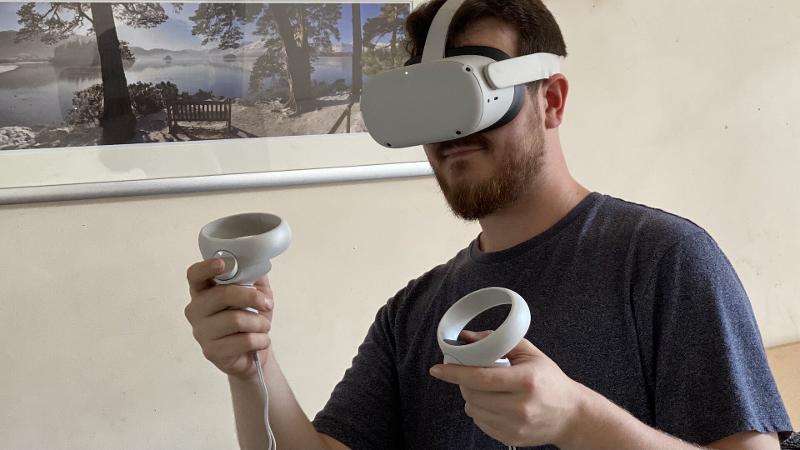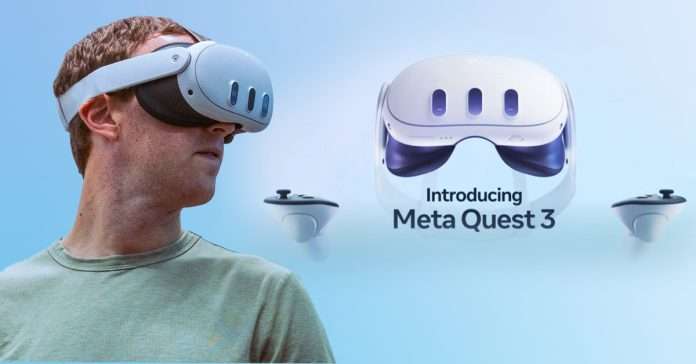The Meta Quest 3 has been officially announced, and it will be available this autumn.
The sequel to the extremely successful Meta Quest 2 has received a lot of attention. What, though, can we anticipate from the next-generation virtual reality headset?
The pricing, design, and functionality of the Meta Quest 3 have been officially disclosed by Facebook – here’s all we know.
When will the Meta Quest 3 go on sale?
The official Meta shop indicates that the Quest 3 will be available this autumn. Pre-orders are not yet available, but you may sign up for email updates on the website.
Today, June 1, the firm is hosting a Quest Gaming Showcase, promising “double the news” of last year’s corresponding event. With today’s announcement, further details regarding the headgear (and maybe the release date) might be revealed.
In the meanwhile, Meta has announced that further material will be available on Meta Connect on September 27, 2023.
When Meta originally teased the Meta Quest Pro in 2021, many expected it would be the Quest 2’s successor. Of course, we now know that it’s a whole new headset with a purpose other than gaming.

How much will the Meta Quest 3 cost?
The Meta Quest 3 is priced at $499/£499 for the 128GB variant, according to Facebook.
This is a step up from the Meta Quest 2’s $399/£399 price tag, but VR aficionados will be relieved to know that this older headset will return to its original $299/£299 price tag on June 4, 2023.
The headset will be sent to every country where the Meta Quest is now available.
What will the Quest 3 specs and features be?
Here is the official video reveal for the Meta Quest 3 – we’ve broken down everything Meta has said about the technical specifications below:
Upgraded design
The teaser video indicates that the Meta Quest 3 would be 40% thinner than its predecessor and will include more cloth for a more comfortable fit. It will also have refreshed lightweight Touch Plus controllers with TruTouch haptics.
These controls remove the outside tracking circles to create more room and a more natural feel.
Bloomberg tested the gadget and confirmed it will have a USB-C connector, volume control, an IPD wheel, and a power button.
Improved performance
The Meta Quest 2 was powered by Qualcomm’s Snapdragon XR 2 platform, which provided the amazing standalone performance we’ve come to expect from Qualcomm.
According to Zuckerberg, Meta and Qualcomm will continue their partnership with the Quest 3 and the next-generation Snapdragon mobile platform, which will have double the graphics performance.
Lynch says in a YouTube video posted in late September 2021 that the Quest 3 would certainly contain the next-generation Snapdragon XR2 Gen 2 CPU, as well as a higher 12GB of RAM and up to 512GB of storage.

Updated LCD displays
While Facebook has announced that the headset would have the “highest resolution display and pancake optics,” we don’t currently have any details. According to Lynch, the Quest 3 will have a higher-resolution, quicker LCD display than the Quest 2.
According to Lynch, the Quest 3 will include an LCD display with a resolution of 20642208 per eye and a 120Hz refresh rate, which is both greater resolution and quicker than the top-end Quest Pro.
While the Quest 2 has had an experimental 120Hz mode for a few months, it is only available to applications and games that support it, with Meta Home and other OS features remaining at 90Hz. The increase to 120Hz will result in a noticeable increase in smoothness regardless of where you use the headset.
Mixed reality
The teasing from Zuckerberg indicated that the Meta Quest 3 will be “…the first mainstream headset with high-resolution color mixed reality,” beating Apple to the punch with their highly anticipated AR/VR headset (albeit Meta is branding its technology ‘MR,’ to stand for Meta Reality).
This implies that users may view a color rendition of their surroundings through the headset’s external cameras. This implies that users may play virtual boardgames on their kitchen tables or use virtual paint to adorn their walls.
Meta has stated that the gadget supports over 500 VR games, applications, and experiences, with more titles in the works for the Meta Quest 3.
This is consistent with what YouTuber Lynch described. He released CAD renderings of the new headgear in late September 2022, along with specifications confirming Meta’s intention to shift attention to mixed reality.
The movie gives valuable information into what to anticipate from the next-generation VR headset, internally dubbed Project Stinson, which appears to be a hybrid of the Quest 2 and Quest Pro.
That makes sense in light of Zuckerberg’s pledge during the company’s Q4 2022 earnings call that the Quest 3 “will feature Meta Reality” – the company’s term for its technology that combines virtual reality and augmented reality elements in the same device.
It is also claimed to include the same pancake lenses as the Pro headset, allowing for a more compact form factor, and a manually adjustable IPD wheel on the bottom of the headset. That will make adjusting the IDP much easier than in the Quest 2, which requires you to remove the headset.
What is the main distinction between Quest 3 and Quest Pro? Lynch reports that the Quest 3 will lack eye and facial tracking, both of which are essential aspects of the Pro headset. It’s most likely a cost-cutting tactic, allowing Meta to keep the price of the Quest 3 low and affordable for users, especially with inflation rates growing fast in many parts of the world.
The video delves into granular information concerning components like as cooling and acoustics, so buckle up for an 18-minute unauthorized deep dive into Quest 3.




